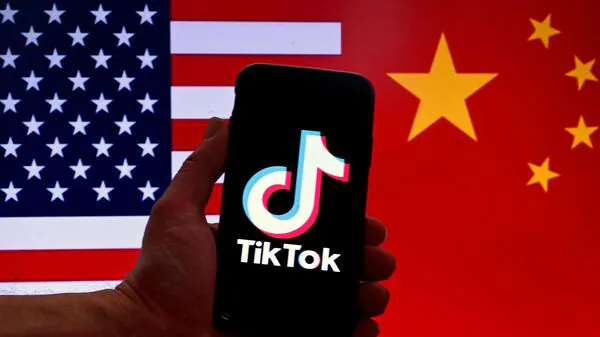# Navigating the Geopolitical Storm: The Future of a Popular Video App
## Introduction
In an era where digital communication and entertainment are intertwined, one video app has captured the imaginations of millions worldwide. However, this app now finds itself at the center of a complex geopolitical conflict between two global powerhouses, the United States and China. The escalating situation raises questions about the app’s future, data security, and international business operations.
## The Heart of the Conflict
The popular video app, known for its creative content and large user base, has come under intense scrutiny. Washington’s concerns center around data privacy and national security implications, given the app’s ties to Beijing. The app’s ability to gather vast amounts of user data has led to fears that it could potentially be used to further Beijing’s geopolitical agenda. This has thereby positioned the app at the heart of broader tensions between the U.S. and China, encompassing trade, technology, and influence.
## Potential Outcomes and Impact
### 1. Regulatory Actions and Restrictions
The U.S. government has been contemplating several measures to mitigate perceived risks. These measures could range from imposing strict data handling regulations to possibly banning the app. By controlling or limiting the app’s operations, Washington aims to protect national security and minimize any foreign influence attributed to Beijing.
### 2. Business Uncertainties and Market Dynamics
From a business perspective, these developments are unsettling. The uncertainty can affect investor confidence and alter market dynamics. Companies affiliated with the app might face disruptions, affecting everything from revenue streams to strategic partnerships. This could also prompt other countries to reconsider their policies regarding technology and data security, influencing global market trends.
### 3. User Base Reaction and Content Creativity
On the user front, potential restrictions or changes in the app’s operational structure could significantly alter the user experience. The vibrant community of content creators, who rely on the app as a platform for expression and income, might have to adjust or migrate to alternative platforms, impacting the digital culture landscape.
## Looking Ahead: Mitigation and Adaptation Strategies
In response to these challenges, there are several pathways forward for the stakeholders involved:
### Strategic Redefinition
The company behind the app might need to redefine its business strategies to navigate through geopolitical landscapes effectively. This could involve restructuring data handling processes or re-aligning its corporate governance according to international standards, making it less vulnerable to political conflicts.
### International Collaboration
Enhancing collaboration between countries on cybersecurity and data protection standards can emerge as a key strategy. By fostering a mutual understanding and crafting collective guidelines, there is potential to reduce tensions and create a safer digital environment for users worldwide.
### Technological Innovations
Investing in technology that enhances data security and user privacy could also be a significant move. By adopting more robust encryption methods and transparent data management practices, the app can reassure both governments and users, maintaining its popularity while complying with international norms.
## Conclusion
As the scenario unfolds, the popular video app remains at a crossroads. Balancing between innovation, user engagement, and geopolitical pressures is no small feat. However, by strategically navigating these complex waters, the app can continue to thrive in a global digital ecosystem. Exploring collaborative, innovative, and strategic avenues might not only safeguard its operational future but also set a precedent in the tech world on managing geopolitics effectively.










